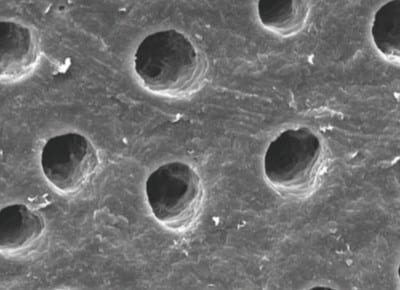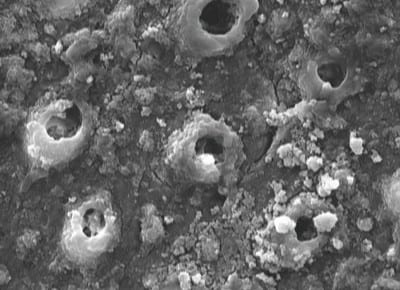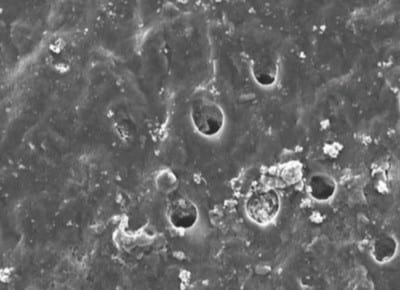Boutique Whitening - the science and the magic!
Looking at some of our results, you would be forgiven for thinking there was some “magic” to Boutique Whitening. However, we simply rely on good, solid, evidence-based science. We believe in adding the least possible unnecessary ingredients in our gel ensures a pure product coupled with maximum results.
Please feel free to visit our resource and training section where you will discover a wealth of information which helps explain the art and science of whitening and how to achieve optimum results using the award winning Boutique Whitening system.
Boutique Whitening Gels
Our gels are made up of either hydrogen peroxide or carbamide peroxide.
Hydrogen peroxide is a potent oxidising agent. The whitening action is a result of oxygen-free radicals that oxidise larger pigment molecules into smaller, less visible molecules.
The Dental Board of Australia advises that only registered dental practitioners can use and supply high concentration teeth whitening products, which have more than six percent hydrogen peroxide. Over-the-counter products do not require the supervision of a dental practitioner and may contain three percent hydrogen peroxide. These products are ineffective in whitening the teeth as the concentration of peroxide is too low and are diluted using other products including Triethanolamine, Papain and Bromelain.
Carbamide peroxide is hydrogen peroxide that is compounded with urea. Urea helps stabilise the formula giving carbamide peroxide a more predictable and longer shelf life than hydrogen peroxide alone.
The Dental Board of Australia advises that only registered dental practitioners can use and supply high concentration teeth whitening products, which have more than 18% carbamide peroxide. Any given volume of carbamide peroxide will yield one-third of hydrogen peroxide when it breaks down.
The difference between hydrogen peroxide and carbamide peroxide

A notable difference between hydrogen peroxide and carbamide peroxide is the rate of breakdown, and therefore, the rate of release of oxygen ions.
Carbamide peroxide is a more stable molecule and breaks down more slowly than hydrogen peroxide. Carbamide released about 50% of its peroxide in the first 2 to 4 hours, then the remainder over the next 2 to 6 hours.
Hydrogen peroxide breaks down almost immediately, releasing its peroxide entirely within the first hour. It is thought that due to this relatively concentrated bombardment of peroxide on the pulp, hydrogen peroxide produces more sensitivity than carbamide peroxide of a comparable concentration.

The science of whitening trays
Without good whitening trays, it is very difficult to achieve good results from home supervised tooth whitening. The trays often have more of an impact on the results than the type of gel used.
Our trays are manufactured to a very specific protocol. Our manufacturing process follows the results of a literature review we undertook to ascertain the best design components of a whitening tray.
Our teeth whitening product range
We offer a wide range of whitening gels to suit most your patients needs.
Boutique by Day 6%
Contains 6% hydrogen peroxide and whitens teeth with 1.5 hours wear time per day.
Boutique by Day 9%
Contains 9% hydrogen peroxide and whitens teeth with 30 minutes wear time per day.
Boutique by Night 10%
Contains 10% carbamide peroxide and whitens whilst you sleep. This formula is for people who have slight sensitivity.
Boutique by Night 16%
Contains 16% carbamide peroxide and whitens whilst you sleep. This formula is for people who want to whiten overnight and suffer little to no sensitivity.
Boutique by Night 22%
Contains 22% carbamide peroxide, our maximum strength to be worn for 45 minutes
Boutique B1 Guarantee
Contains eight 16% carbamide peroxide syringes and our custom designed whitening trays to whiten whilst you sleep – and we guarantee shade B1.
Boutique Biomin Toothpaste
Our toothpaste is designed to work in combination with Boutique Whitening gel to reduce sensitivity and replace lost minerals on the tooth surface. Armour for teeth!
Boutique Biomin Formula
The formula contains a new generation of bioactive glass, incorporating fluoride, phosphate and calcium ions which are released gradually over 12 hours.
As it dissolves, the glass structure precipitates as fluorapatite which aids remineralisation of tooth enamel. Fluorapatite is more stable and resistant to acidic attack than hydroxyapatite formed by previous generation bioactive glass. Biomin particles chemically bond to calcium in the enamel, and as they dissolve the ions occlude exposed dentinal tubules which prevents hydraulic conductance and reduces sensitivity.
Biomin is engineered for “smart activation” in acidic environments, such as following consumption of certain food and drink. Low pH causes the bioactive glass to dissolve more rapidly, neutralising the acid, restoring pH balance and replacing lost minerals.

Biomin F - tubule occlusion. Before brushing.

Biomin F - tubule occlusion. After brushing with Biomin F.

Biomin F - tubule occlusion. After acid challenge. The tubules remain occluded.
The clinical effects
Boutique Whitening is backed up with the decades of research that underpin dentist supervised home whitening. There are studies that demonstrate that tooth whitening is a safe and effective treatment with very little in the way of side-effects and no associated damage to the teeth.
Tooth whitening is one of the most researched cosmetic procedures in the world and has a wealth of evidence to support the effectiveness and safety of the take home technique, if correct protocols are observed. There are many studies that exist which demonstrate the effects of peroxide on the various layers of the human tooth.
Dentine is affected more by the whitening process than enamel tissue. Spyrides GM, et, al, study from 2000 showed that dentine bond strength decreased by as much as 76% post whitening. Further research from Na-Young Jeong, et, al, in 2006 showed that 2 weeks was sufficient to allow the dentine to recover and bond strengths returned to near the same pre-whitening levels.
Always schedule any restorative work at least 2 weeks after the patient has finished whitening. If there is any immediate bonding required, soaking the dentine in a 70% ethanol solution for 2 minutes can restore bond strengths to near pre-whitening levels.
Owing to the sensitivity associated with tooth whitening, it is often wrongly assumed that whitening causes pulpal damage. JO Fugaro, et al, carried out a study in 2003 on the reaction of pulpal tissue to two weeks use of 10% carbamide peroxide can cause mild, localised pulp reactions. However, these did not affect the overall health of the pulp tissue and were reversible within two weeks post-treatment. Therefore, two weeks of treatment with a 10% carbamide peroxide is considered safe for the pulp.
Another study by Cohen showed that hydrogen peroxide up to 35% concentration was harmless to the pulp. It is a safe assumption that no long term harm will come to the pulp from the concentrations of whitening solution that are used in home whitening.
Enamel is not significantly affected by the use of peroxide based products. A study by Leonard, et al, in 2001 assessed the effect of 10% carbamide peroxide on the surface morphology of enamel after 2 weeks, and again after 6 months using electron microscopy at 2000 times magnification. There was no significant effect on the surface of enamel immediately after whitening and it did not worsen over time.